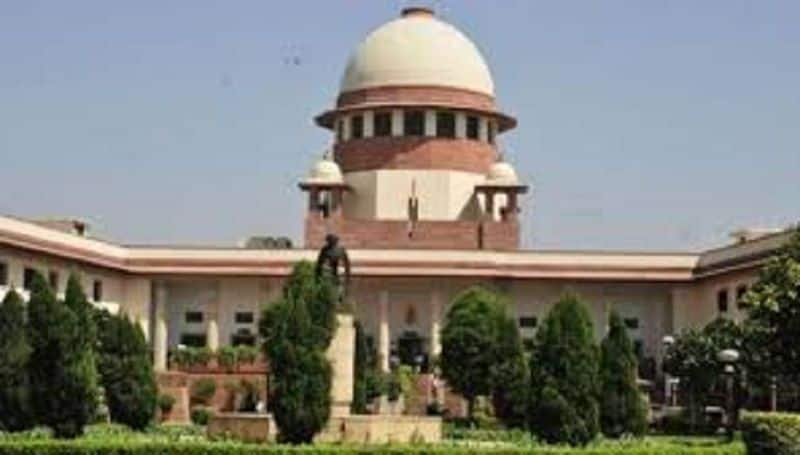The circular, if implemented, would have taken many big companies like Essar Power, GMR Energy, KSK Energy and Rattan India Power to insolvency.
New Delhi: The RBI will soon issue a revised directive on stressed asset resolution that will comply with the Supreme Court order striking down the February 2018 circular.
Chief economic adviser Krishnamurthy Subramanian said the government and the RBI would work together to ensure smooth implementation of the Supreme Court ruling and that there would be no changes in the Insolvency and Bankruptcy Code.
The circular, if implemented, would have taken many big companies like Essar Power, GMR Energy, KSK Energy and Rattan India Power to insolvency.
The Supreme Court judgment gives banks the option to decide whether they need to refer a case to the bankruptcy court or not. On the other hand, banks have requested the Reserve Bank of India (RBI) to make only a little relaxation in the new norms for stressed assets and have asked for 90% consent from lenders for approval as opposed to the mandated 100% consent in last year’s circular.
The Indian Banks’ Association (IBA) has recommended to RBI regarding the lenders’ consent clause, and the said recommendations have disappointed companies. IBA wanted 90% lenders’ consent against the requirement of 66% approval specified in the Insolvency and Bankruptcy Code.
"The 90% limit is no better than the 100% consent. The chances of a resolution process being agreed upon by all the lenders or 90% of lenders are meagre, as we have already seen in most resolution processes over the past one year,” said an industry executive requesting anonymity.
The 100% lenders’ approval clause was considered the most rigid requirement in the circular as lenders were not able to get all lenders on board for a resolution scheme. Resolution plans of most projects have been stuck for want of 100% consent from lenders.
A senior official with a public sector bank, however, said that no significant deals were made even when the consent required was at 75% in the RBI circular.
Vide Judgment dated April 2, 2019, the Hon'ble Supreme Court struck down the Reserve Bank of India (RBI)'s circular dated February 12, 2018, in the case of Dharani Sugars & Chemicals Ltd. versus UOI & Ors, and its connected cases.
The struck down circular provided, amongst others, that in respect of accounts with aggregate exposure of the lenders at Rs 2,000 crores and above, on or after March 1, 2018 (‘reference date’), including reports where resolution may have been initiated under any of the existing schemes as well as accounts classified as restructured standard assets which were in respective specified periods as per the previous guidelines, Resolution Process (RP) shall be implemented as per the following timelines:
i) If in default as on the reference date, then 180 days from the reference date.
ii) If in default after the reference date, then 180 days from the time of first such default. If an RP in respect of such large accounts is not implemented as per the timelines as specified above, lenders shall file insolvency application, singly or jointly, under the Insolvency and Bankruptcy Code, 2016 (IBC) within 15 days from the expiry of the said timeline.
While interpreting section 35AA of the Banking Regulation Act, the Hon'ble Apex Court held that: This is clear also from the Press Note dated 05.05.2017, which
introduced the Ordinance which specifically referred to the resolution of “specific” stressed assets which will empower the RBI to intervene in “specific” cases of resolution of NPAs. The Statement of Objects and Reasons for introducing Section 35AA also emphasises that directions are in respect of “a default”. Thus, it is clear that directions issued under Section 35AA can only be in respect of specific defaults by specific debtors.
This was also the understanding of the Central Government when it issued the notification dated 05.05.2017, which authorised the RBI to issue such directions only in respect of “a default” under the Code. Thus, any directions which are in respect of debtors generally would be ultra vires Section 35AA.
“In the light of Supreme Court order, RBI will take the necessary step including the issuance of a revised circular as may be necessary for expeditious and effective resolution of stressed assets,” Shaktikanta Das said. “The RBI stands committed to maintain and enhance the momentum of resolution of stressed assets and adherence to credit discipline.”
Last Updated Apr 22, 2019, 4:24 PM IST











![Salman Khan sets stage on fire for Anant Ambani, Radhika Merchant pre-wedding festivities [WATCH] ATG](https://static-ai.asianetnews.com/images/01hr1hh8y86gvb4kbqgnyhc0w0/whatsapp-image-2024-03-03-at-12-24-37-pm_100x60xt.jpg)
![Pregnant Deepika Padukone dances with Ranveer Singh at Anant Ambani, Radhika Merchant pre-wedding bash [WATCH] ATG](https://static-ai.asianetnews.com/images/01hr1ffyd3nzqzgm6ba0k87vr8/whatsapp-image-2024-03-03-at-11-45-35-am_100x60xt.jpg)



